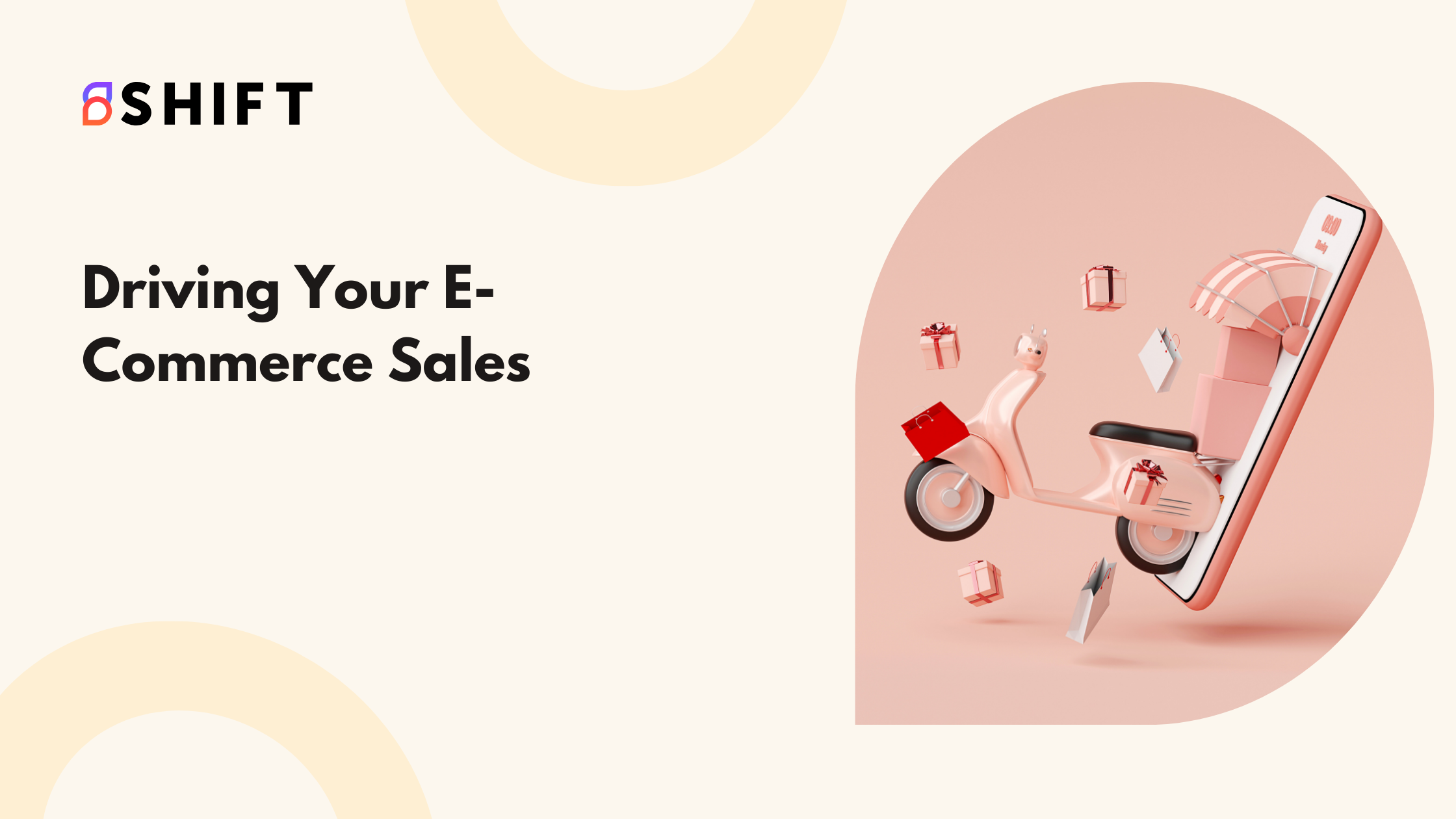- 06 May, 2022
Driving Your E-Commerce Sales

“Your most unhappy customers are your most important source of learning.” Bill Gates, Microsoft Founder
Regardless of whether it’s a conventional showroom, face-to-face, or online sales, the customer continues to be a king. It becomes more relevant in e-commerce selling, where there’s no face-to-face contact with the customer, and everything is based on statistics. The advantage of meeting a customer, wooing him or her with your sincerity and warmth is denied in the digital age.
The following decisions can dictate the way your e-commerce sales graph keeps looking upwards.
Looking for a pattern in customer behaviour is the first step. Does a customer always look for only bargain items? Is quality the criteria? Or is it only the cheapness that is paramount? Does the customer engage in repetitive buying, like a specific brand or type of cosmetic soap, toothpaste, clothes brand, or even books of a specific author or genre?
Discerning any kind of pattern in your customer buying is the first step to improving your sales. When you reach a point where the sales are getting predictable, you’ve got a winning proposition.
In the meantime, you should also be able to identify slow-moving products or services. And why are they so? Is it because trends are changing? Or do you get consistent complaints from customers?
The customer is usually never wrong. It could well be your product that needs an improvement, either in terms of its quality or the selling approach. Compare your slow-moving products with the faster ones. Search for dissimilarities. Are you able to discern a pattern?
Distinguish the types of customers that you serve. Typically, these are the following types:
⇒ New
– a customer who has come in, through reference, web search, or accidentally. Encourage this customer and transform her from a new to a loyal customer with your sincerity and commitment.
⇒ Impulsive
– a buyer who enquires about product A but sees product B, and buys it for no easily known reason. Explore the decision of this buyer and find out what works or doesn’t work.
⇒ Insistent
– a person who is insistent on getting only a particular brand, type, or cost-sensitive product, and cannot be swayed by substitute products. For example, a customer insists only on a corduroy check shirt and nothing else. Or a woman who insists only on a particular brand of makeup. In a way, such customers are a delight, because if you’ve got a product that she wants, it’s a good sale, and of course great customers. It’s also an opportunity to explore why this product is in demand, even if only by one customer.
⇒ Loyal
– these are the delightful variety who stick by you, through thick and thin. Everything that you do is pleasing to this type of customer and a “must-have” on your list!
Segmenting your customers is thus very vital to the success of your organization.
Optimizing your pricing structure:
In other words, price your products based on how much the customer is willing to pay. It’s quite possible to work out how much a customer is willing to pay, rather than following a cost accounting method. To elucidate, your cost accountant might tell you that a product needs to be sold for $100, to break even, if not make a profit. In contrast, if a customer is bargaining to pay only $90, but is willing to take more than one unit of the product, it’s a worthwhile compromise. You can increase your sales based on large-volume sales. And what’s more, studying the buying trend and the reviews that you’re getting for your item, more and more customers will begin to patronize this product line.
Finally, use a good analytics tool for observing, predicting, and automating your sales. Automate, automate and keep automating your sales order processing!
Content
Related Blog
30 September, 2025
How to Reduce eCommerce Weight Discrepancies: Smart Hacks for 2025
If your business ships products – whether you sell online, supply goods to shops, or send parts to factories – you know this worry well. You pack your shipment, declare the weight, and weeks later, the delivery company sends a
Read More05 August, 2025
7 Reasons Social Shopping Will Dominate Online Retail in 2025
In 2025, social shopping is a $1.4 trillion global force. Here are 7 trends shaping online retail—and what your brand must do to stay relevant.
Read More31 July, 2025
How to Choose a 3PL Partner in India: Complete Guide for eCommerce Brands
Finding the right fulfillment partner is more than comparing prices. Learn how to evaluate 3PL providers based on operations, technology, shipping strategy, and customer experience. This guide is your blueprint to scale confidently.
Read More